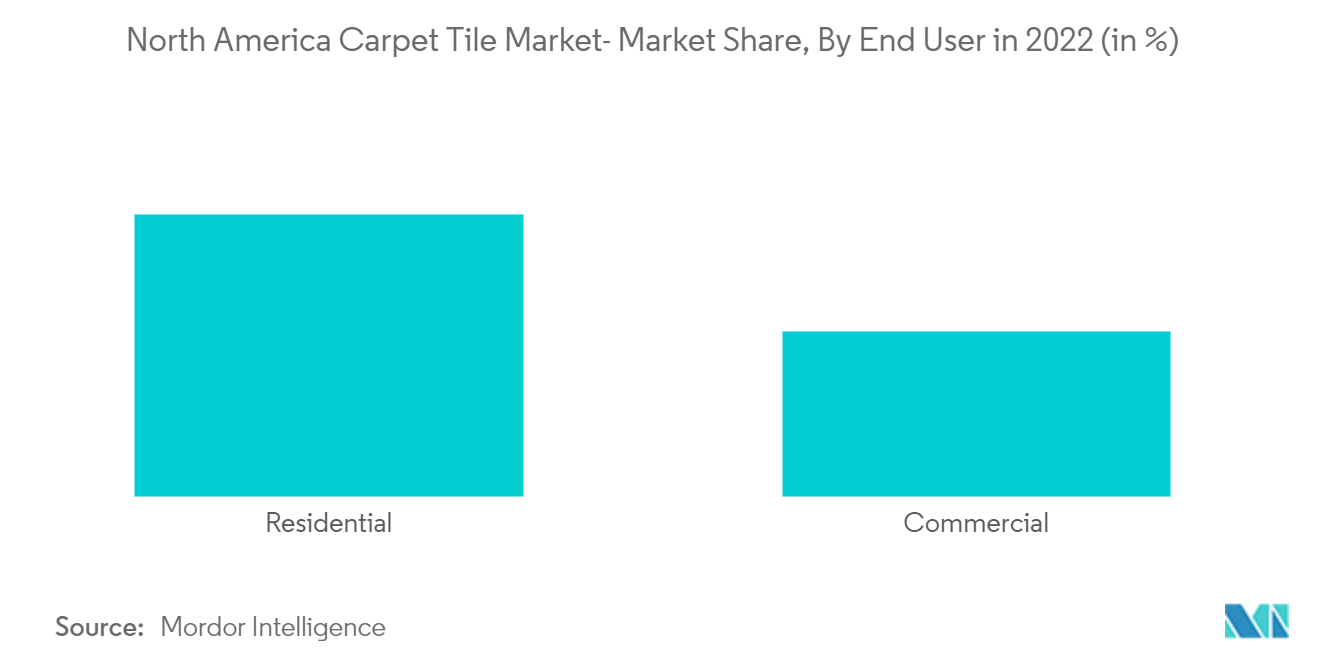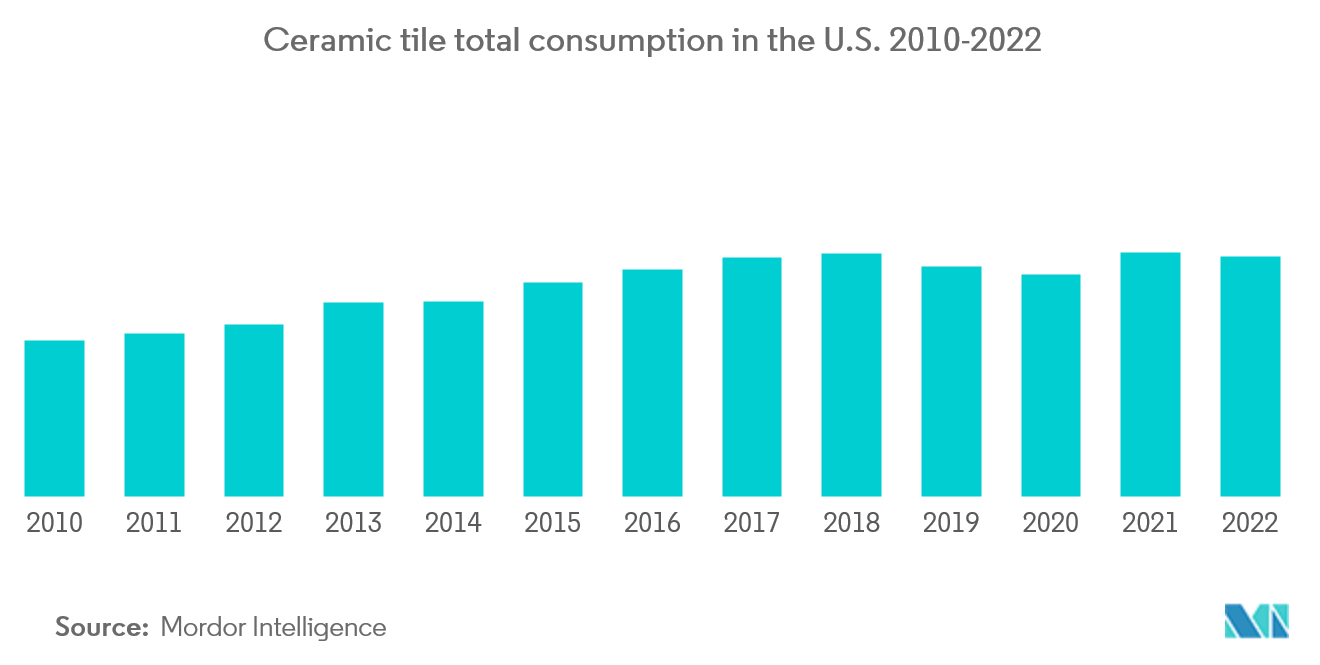Market Trends of North America Carpet Tile Industry
The Residential Segment in North America is Driving the Market
Growing disposable income and comparative advantages over other flooring solutions lead to an increase in home renovation projects, such as the removal of worn or out-of-style carpets and rugs, which may spur demand. The installation of new carpeting can improve a home's appearance and boost its value.
Carpet tiles and carpets are often installed in newly built houses because of their moderate cost, ease of installation, and favorable aesthetics. Residential remodeling and replacement will continue to account for the largest share of carpet and rug demand as homeowners replace older or worn carpets and rugs with newer products that offer enhanced visuals or improved stain resistance.

The United States is Dominant in the Market
The United States has been the leading North American carpet tile market and is expected to continue the same trend over the forecast period. The rapid expansion of the construction and housing activities across the region, particularly in the United States, is one of the primary factors expected to foster the growth of the carpets and carpet tile market in the growth of market in the United States. Apart from that, increasing renovation and remodeling activities in the real estate sector in the United States have resulted in a massive demand for carpet tiles over the last few years. The region has a high rate of innovation, which helps in propelling market growth. High disposable income leads to a high level of investment and better standards of living. The United States is one of the countries generating the highest revenue for the market.
In 2022, sales of floor coverings in the United States slowed significantly from the year-over-year growth seen in 2021. The year began strong, as flooring sales continued to benefit from the strong demand for flooring in 2021. However, floor-covering sales growth slowed in the second half of the year as interest rates were raised aggressively by the Federal Reserve to contain inflation pressures. Rising interest rates led to a sharp decline in housing starts, as well as existing home sales, both of which are the main source of sales for U.S. floor coverings. Inflationary pressures, combined with supply chain issues, pushed flooring prices up and installation costs skyrocketing. With an ever-increasing cost to install a floor, customer purchases slowed at an even faster pace than manufacturer sales.


